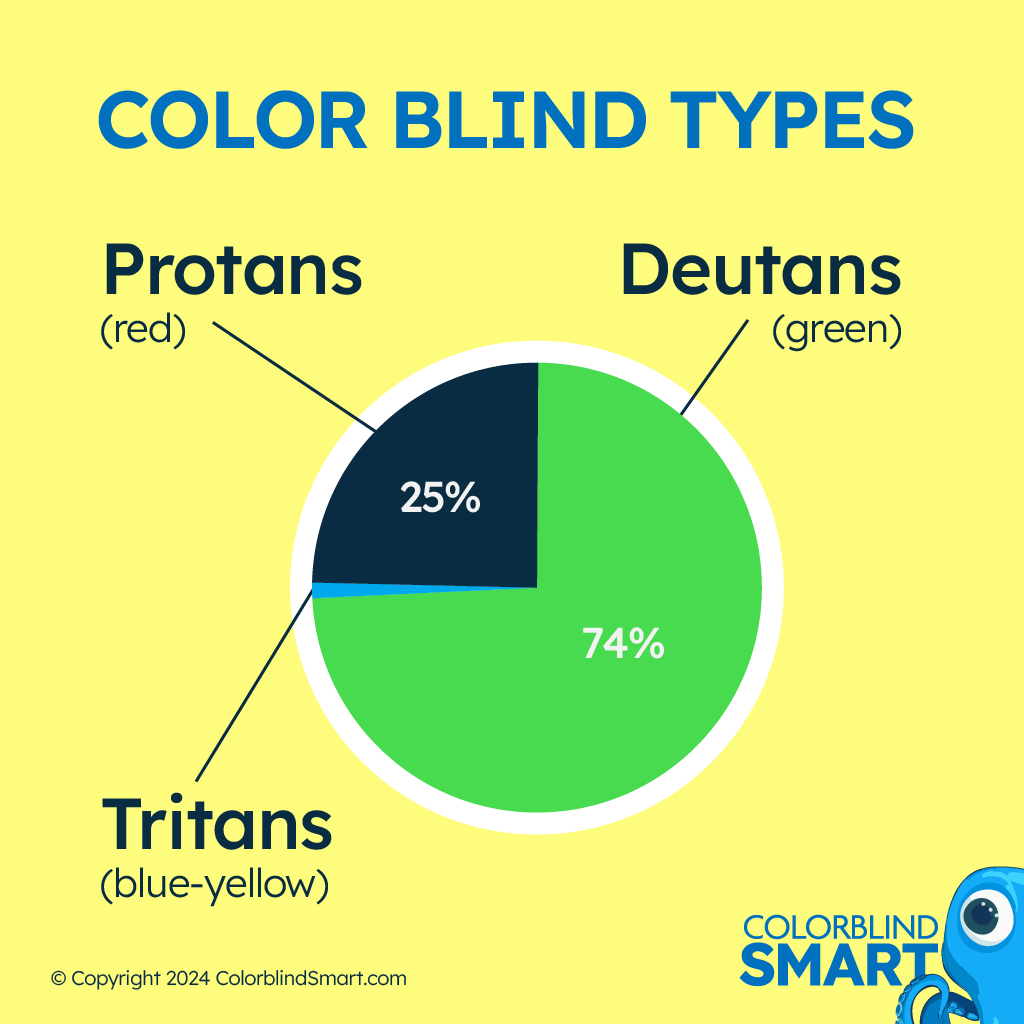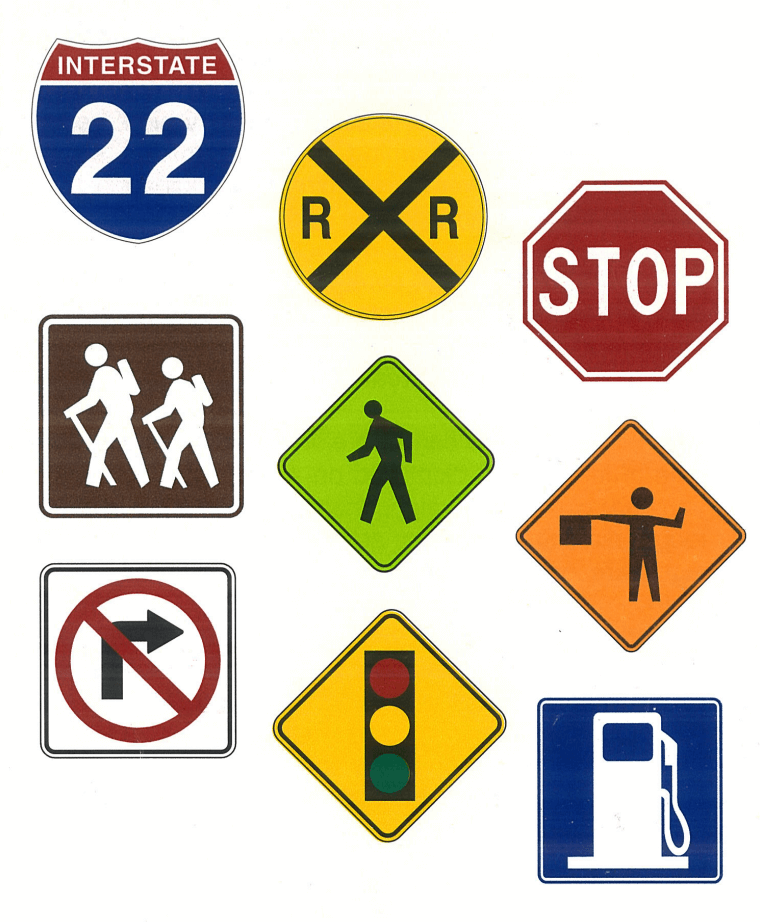Can Colorblind People Drive?
Quick Answer: When you hear that color blindness affects red and green colors primarily it’s easy to wonder, “how do colorblind people drive?” But colorblind people can drive and here are several techniques they use to drive safely.

I’ve been color blind my whole life and I remember as a child being confused at first because stop lights didn’t look like they had a green light to me. And at night the red and yellow lights looked very similar. By the time I learned to drive I had figured out which light was which. Let’s discuss color blindness and some tips for color blind drivers.
Understanding Color Blindness
Color blindness, often called color vision deficiency, usually involves trouble telling red and green apart. Some folks struggle with blue and yellow too, but red-green difficulties are most common. Contrary to popular belief, most people with color blindness do see color, just in a different way than people with typical vision. This difference can lead to questions like, “Can a colorblind person drive?” or “How do colorblind people drive if they can’t see red or green clearly?” The key is learning how to rely on more than color alone.
Types of Color Blindness and Driving

-
Deutan (Green Cone Deficiency)
I have deutan (green cone deficiency) which is the most common type of color blindness. My green cones don’t process green light the way they should, which often makes green look more gray or yellow. With stop lights, the green light usually looks more white or light gray. -
Protan (Red Cone Deficiency)
Less common but the red cones fall short, so reds may look darker or merge with greens and yellows. -
Tritan (Blue-Yellow Deficiency)
Extremely rare, but still relevant when it comes to certain traffic lights or dashboard indicators.
Regardless of the type, it helps to concentrate on where lights are positioned and how bright they are, rather than depending on color alone.
Colorblind Traffic Light Challenges
One of the biggest worries is how to handle traffic lights that depend on color. A color blind traffic light, especially at night or in dim settings, can be hard to interpret. Here are a few strategies:
-
Look at Position
In most places, the red light is at the top, yellow in the middle, and green at the bottom. Knowing which light is which helps a lot. This works 99% of the time because most lights are vertical. However, you may run into an occasional horizontal traffic light in which case green is on the right and red is on the left. -
Check Brightness
Even if red and green look similar, brightness levels can set them apart. Red lights can appear slightly darker, while green lights may appear lighter or more white. -
Use Other Clues
Look at what drivers and pedestrians are doing. If brake lights up ahead stay on, the signal is likely red or about to change. -
Night Driving Tips
Red and yellow lights can blend at night. Pay extra attention to positioning. Also keep your windshield, headlights, and mirrors clean to avoid glare. It can also be more difficult at night to see the position. Some traffic lights have been adding reflective material to outline the shape of the light to help with this.

When in doubt just approach the traffic light cautiously. Being closer will stimulate more cones in your retina and can often give your eyes a better chance at accurately discerning the color.
Can a Colorblind Person Drive Legally?
People often ask, “Can colorblind people drive?” The short answer is yes, in most cases. I actually enjoy driving quite a bit because it gives me time to relax and think. Laws differ from region to region, but most colorblind individuals are free to get a license.
-
Driving Laws
Many places have basic vision tests, though most don’t require color vision tests. Certain commercial or specialized licenses may check for color vision. -
Common Myths
There’s a rumor that colorblind drivers aren’t allowed on the road, which usually isn’t true. Some specific jobs, like certain trucking routes or aviation roles, might have restrictions. -
Exceptions
Rarely, people with severe color vision issues or other eye conditions may face extra rules. But most pass standard driver’s exams.
Color vision requirements for driving licenses vary globally, with some countries implementing specific tests and restrictions for individuals with color vision deficiencies.
Countries with Color Vision Tests and Restrictions:
- China: Individuals with color blindness are prohibited from obtaining a driver’s license. 
- Russia: Since 2012, individuals with dichromacy (complete inability to perceive certain colors) are banned from obtaining a driver’s license. 
- Thailand: Applicants must pass a color blindness test during the licensing process. Those who fail may be disqualified from obtaining a license, though this policy has faced criticism. 
- Singapore: Applicants are required to pass the Ishihara Test for color perception. Colorblind candidates who fail may be referred to an eye doctor for further assessment. 
Countries with Relaxed or Removed Restrictions:
- Romania: In April 2003, Romania removed color blindness from its list of disqualifying conditions for learner driver’s licenses. It is now considered a condition that could potentially compromise driver safety, requiring evaluation by an authorized ophthalmologist. 
- India: In June 2020, India relaxed its regulations, allowing individuals with mild to moderate color vision deficiency to obtain a driver’s license, while those with severe deficiencies may still face restrictions. 
- Australia: Previously, Australia had restrictions for colorblind individuals obtaining commercial driver’s licenses. However, these restrictions were revoked in 2003. 
How Do Colorblind People Drive Safely?
Wondering how do colorblind people drive every day? The reality is, we usually adapt naturally. In fact, the latest research shows that with proper training color blind people’s brains can overcome more than should be theoretically possible (see Can Color Blindness be Cured). These are some ways to make adapting easier:
-
Rely on Shape as Much as Color
Traffic signs are often given distinctive shapes in addition to unique colors. Hexagonal stop signs, triangular warning signs, rectangular informational signs along with informative text all help with additional cues to keep us safe even if we can’t see colors clearly. -
Ask for Help if Unsure
When you’re riding with someone else, don’t be afraid to confirm an unusual signal or if something looks off. Don’t be frustrated by people offering to help, it just means they care. -
Use Navigation Tools
Apps with voice directions reduce the need to rely on color-coded street signs. Some phone apps can also name colors on the spot, but don’t use these while you’re driving. -
Keep Your Car in Good Shape
Clean mirrors, headlights, and windshields help with visibility. Seeing more details can clear up confusion. Even when you’re color blind your eye can perceive subtle differences between hues so keep training that ability. -
Plan for Night Driving
Glare can cause extra trouble after dark. If possible, drive on roads you know or choose well-lit routes to avoid problematic areas.
Real-Life Experiences
My wife drove up to a stoplight recently and the sun was setting directly behind them, refracting through the glass making all three lights look lit. She stopped the vehicle, looked at the driver in the lane beside her. Neither of them could see which light was lit. They cautiously proceeded forward and it worked out. Even people with normal color vision can run into challenging driving circumstances.
Don’t feel like you’re alone in these challenges. There are hundreds of millions of color blind people in the world who can relate to the struggle.
Beyond Traffic Lights: Other Driving Considerations
Road Signs and Shapes

-
Stop Signs and Yield Signs
Recognize them by their shape. A stop sign is octagonal, a yield sign is triangular. Don’t rely on color alone. -
Colored Lanes or Markings
Some places color bike or bus lanes. It’s helpful to research local roads so you know which sections are off-limits or meant for certain vehicles.
Dashboard Indicators
-
Recognize Icons
Look for the oil can, engine symbol, or battery icon instead of focusing on whether a warning light is red or yellow. -
Car Maintenance Reminders
If you’re not sure which warning light you’re seeing, check your car’s manual or label them yourself.
Next Steps
So, can colorblind people drive? Absolutely. Even though a colorblind traffic light can be confusing, especially at night, millions of drivers with color blindness manage work commutes, road trips, and everyday errands without major issues. The secret is to focus on patterns, shapes, and context clues rather than color alone.
Keep your car well maintained, stay mindful of your surroundings, and consider helpful technology as needed.
If you’re colorblind or know someone who is, remember that color vision deficiency is rarely a deal-breaker for driving safely. With the right approach and a little extra awareness, colorblind drivers can travel anywhere they need to go with confidence.
I love helping color blind people overcome these challenges. If you want to learn more about how to train your color perception and improved your color vision, sign up for my free email course below.
Last updated: April 04 2025